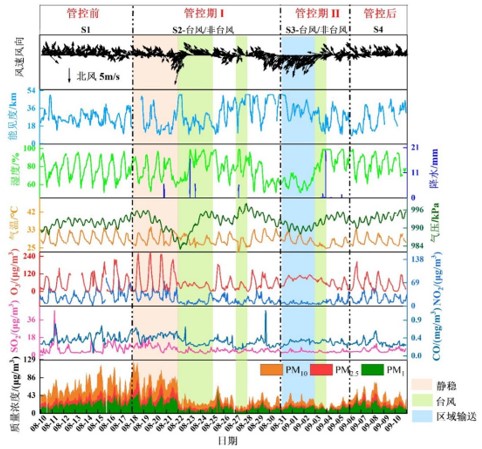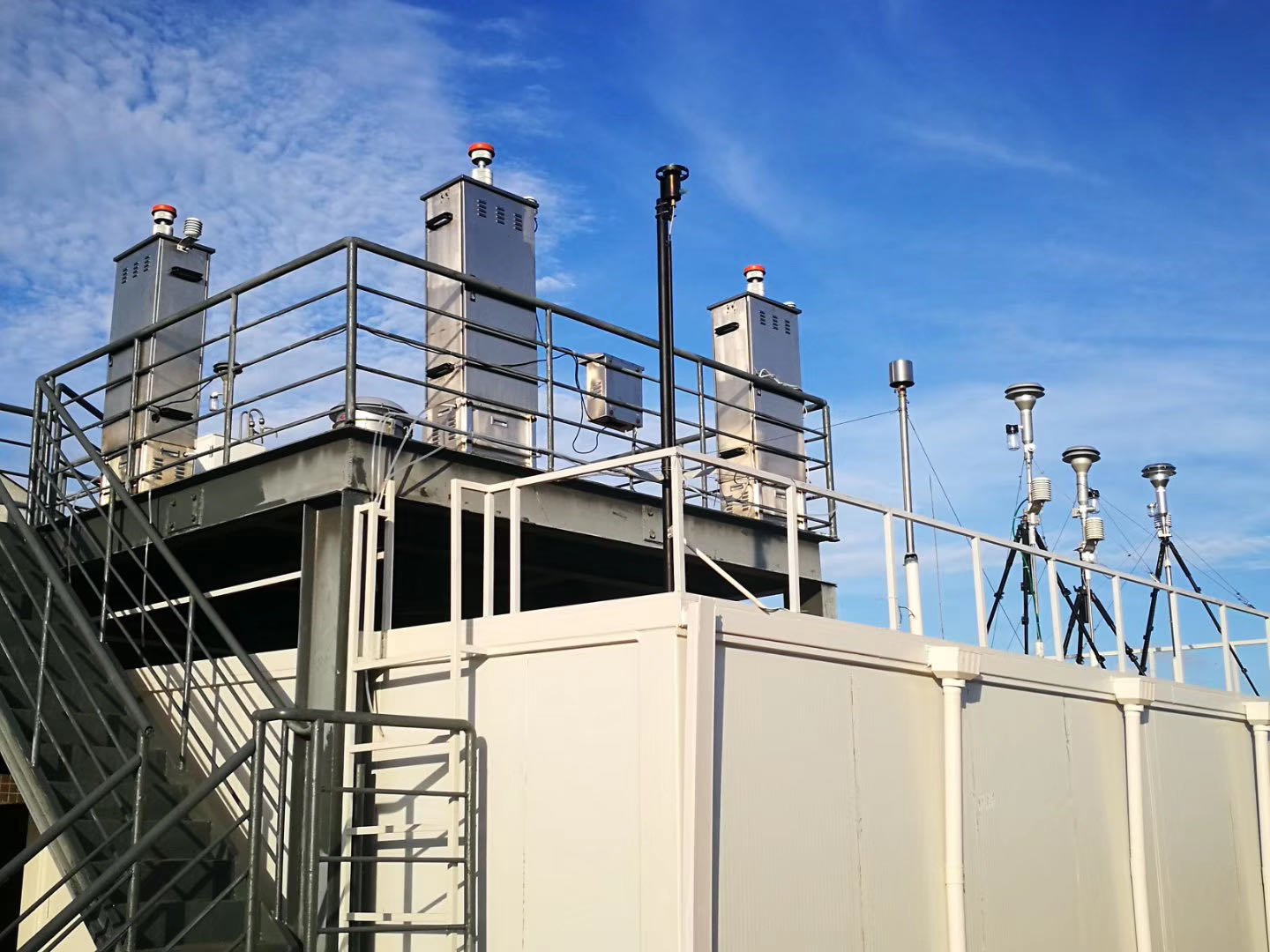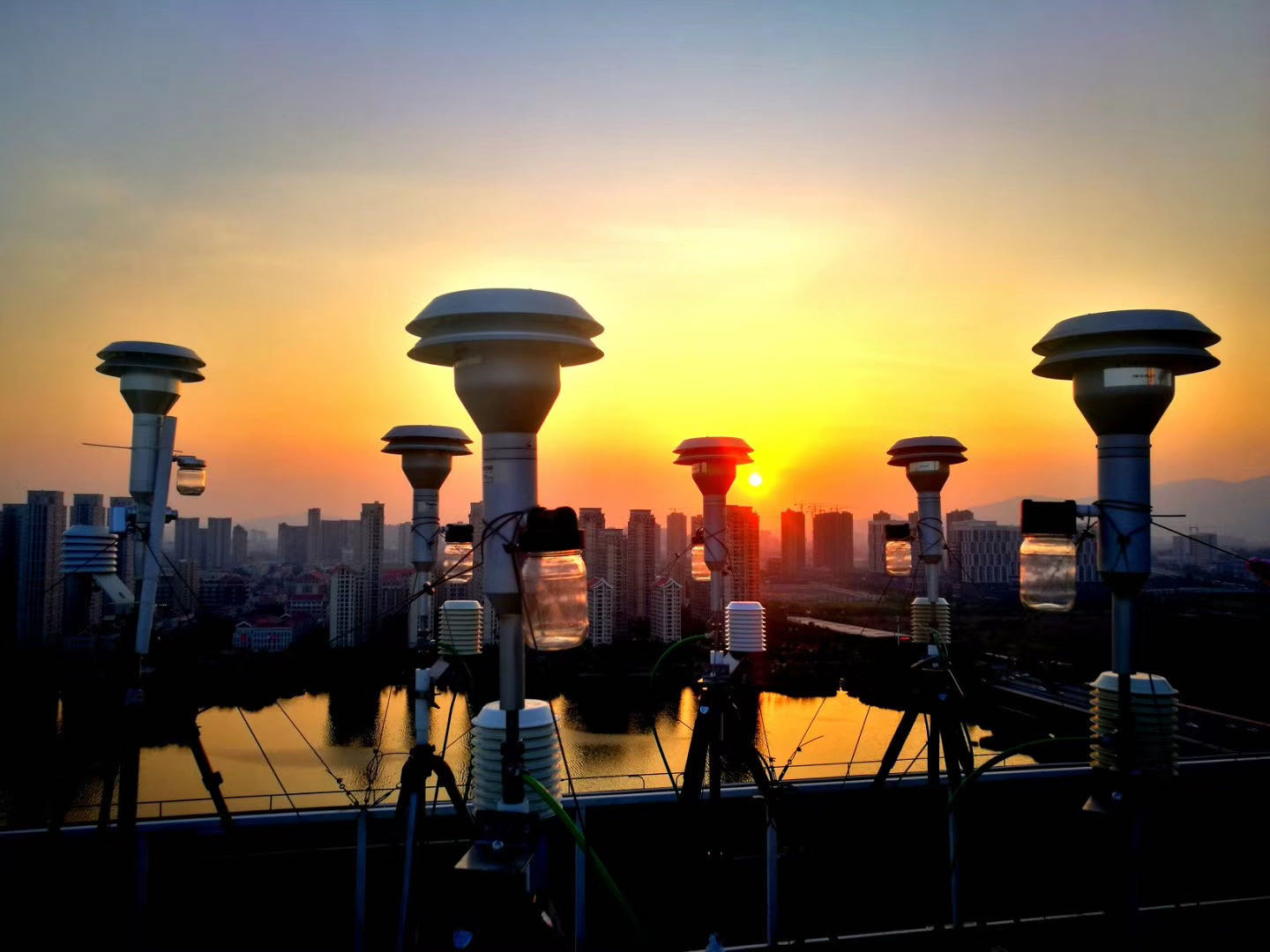Recently, the team of Atmospheric Environment led by Professor CHEN Jinsheng in the Institute of Urban Environment, Chinese Academy of Sciences (IUE, CAS) had found that PM2.5 showed different pollution characteristics and mechanisms under the artificial control and synoptic situations.
Due to the impact of the East Asian monsoon, subtropical high pressures, typhoons, and strong precipitation during the 2017 BRICS National Summit in Xiamen, Fujian Province experienced adverse weather conditions, making atmospheric pollution more complicated. This event provided a good opportunity to further study the pollution characteristics of atmospheric particulate matter under the influence of artificial control and synoptic situations.
To explore the impact of control measures and synoptic situations on the characteristics of atmospheric particles during the BRICS National Summit in Xiamen, the gaseous pollutants, water-soluble ions and organic carbon/elemental carbon of PM2.5 have been monitored online at high time resolution. The whole study period was divided into six stages based on the air quality control measures and the synoptic situations (i.e., S1, S2-non-typhoon, S2-typhoon, S3-non-typhoon, S3-typhoon, and S4). The results showed that the impact of control measures on PM2.5 concentration in S2-non-typhoon was weak because of stagnant meteorology. Typhoon decreased PM2.5 concentration significantly, and had more significant impact on the decline of secondary inorganic ions than carbonaceous components. The daily variations of NOR during typhoon and non-typhoon period were similar, which indicated that sea salt could promote heterogeneous reaction of NO2 to NO3-. PMF results showed that the secondary inorganic source was the most important source of PM2.5. With the implementation of the control measures, the contribution of dust source was reduced from 21% to 6%, while the contribution of vehicle source was not reduced significantly, which was due to the impact of traffic restriction measures on reducing the NO2 concentration was more significant than that of particulate matters. The research results can provide effective technical support for the control of atmospheric particulate matters under the unique coastal environment and special meteorological conditions.
The research results were published on Environmental Monitoring in China under the title of Chemical Characteristics and Sources of PM2.5 During the 2017 BRICS Summit in Xiamen. PhD student LIU Taotao is the first author. Associated Professor XU Lingling is the corresponding author. This work was supported by the National Key Research and Development Program (2016YFC02005).

Time series of air pollutant mass concentrations and meteorological parameters


Air Monitoring Supersite